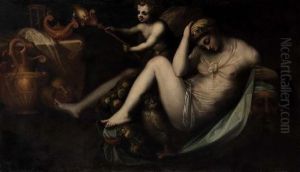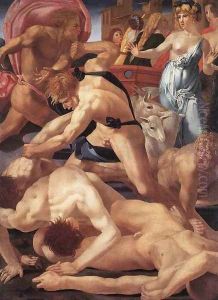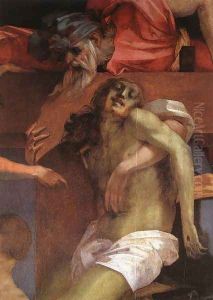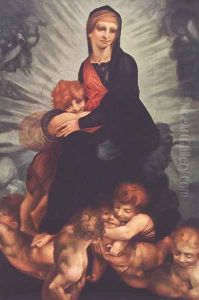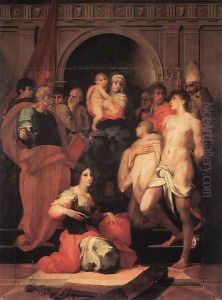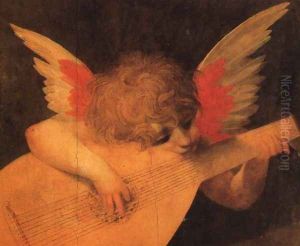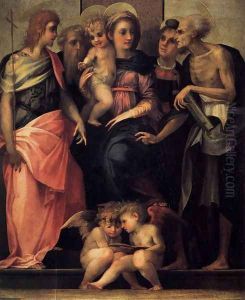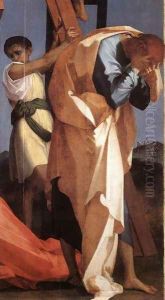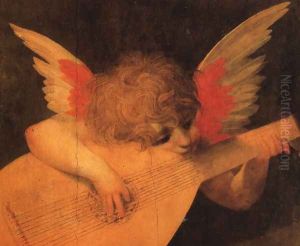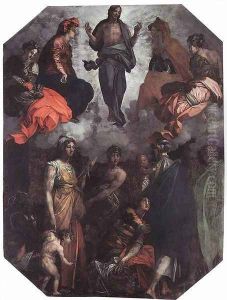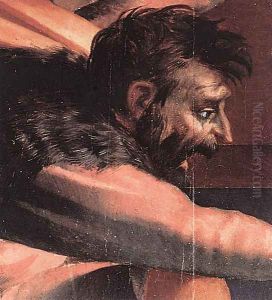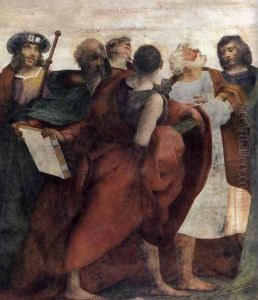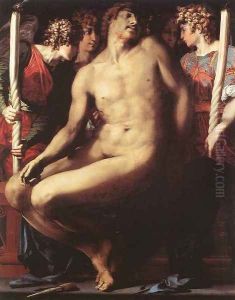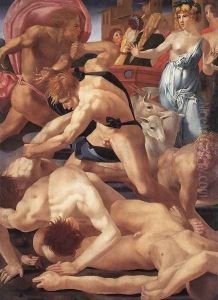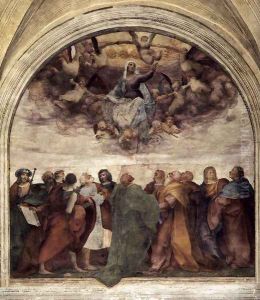Fiorentino Rosso Paintings
Giovanni Battista di Jacopo, better known as Rosso Fiorentino or Il Rosso (the Red, because of his red hair), was an Italian Mannerist painter, born in Florence, Italy. He was a contemporary of Pontormo and an important figure in the early development of the Mannerist style. Rosso's works are characterized by their dramatic, often emotionally charged compositions, elongated figures, and a bold use of color.
Rosso received his early training in the workshop of Andrea del Sarto, alongside his friend and fellow artist Jacopo Pontormo. Despite the influence of del Sarto's balanced and harmonious style, Rosso developed a much more unconventional and expressive approach. His early works, such as 'The Assumption of the Virgin' (1513-1514), already show a departure from the naturalism of his teacher with their heightened drama and complex compositions.
In 1523, after a murder charge in Florence, Rosso fled to Rome, where he was exposed to the works of Michelangelo and Raphael. However, the Sack of Rome in 1527 forced him to leave the city. He spent a brief period in Perugia and Borgo San Sepolcro before moving to France in 1530. By invitation of King Francis I, Rosso traveled to Fontainebleau, where he played a pivotal role in the decoration of the Château de Fontainebleau, becoming the first artist in what would later be known as the School of Fontainebleau.
At Fontainebleau, Rosso's work matured, and he developed a more refined Mannerist style. His frescoes and paintings there, such as 'The Gallery of Francis I' (1533-1539), display a sophisticated integration of wall space and painted architecture, creating an immersive environment. This work was instrumental in spreading the Italianate Mannerist style throughout France.
Despite his success, Rosso's life was marked by bouts of depression and financial difficulties. His career in France ended abruptly with his suicide in 1540. Rosso Fiorentino's legacy is significant as he played a key role in the dissemination of Mannerist aesthetics beyond Italy, influencing a generation of French artists and contributing to the development of European art.
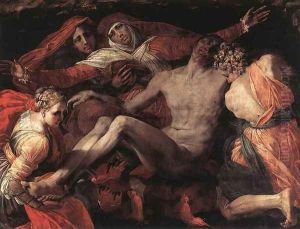
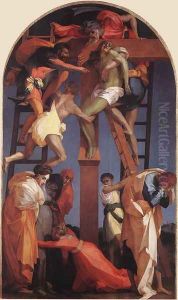
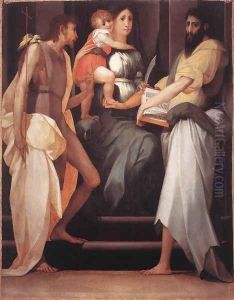
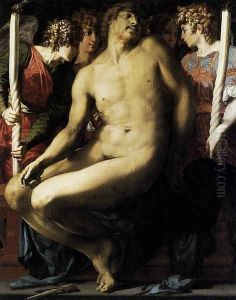
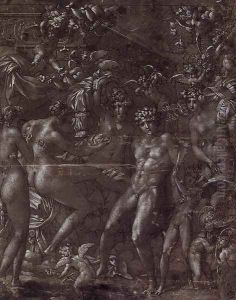
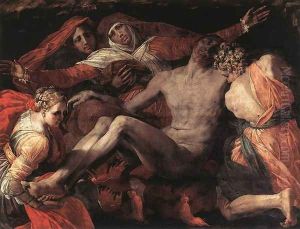
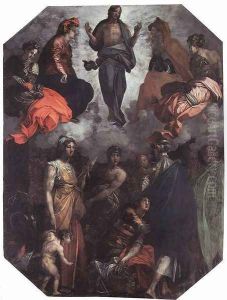
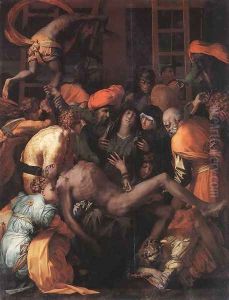
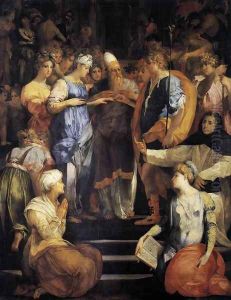
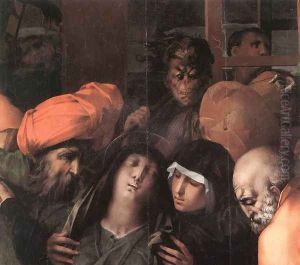
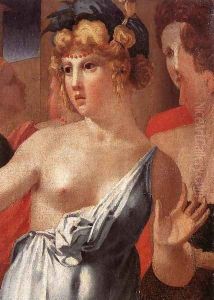
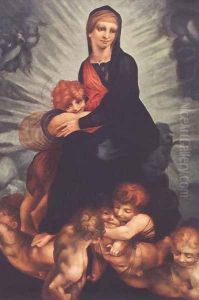
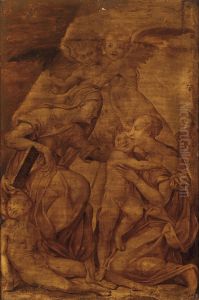
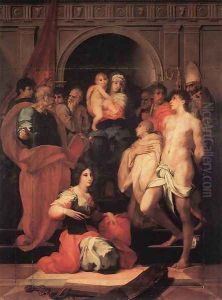
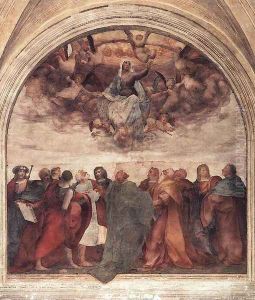
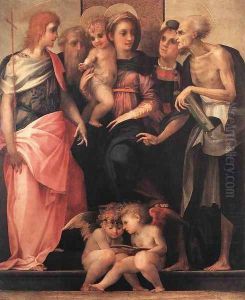
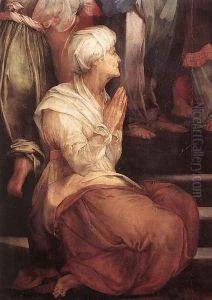
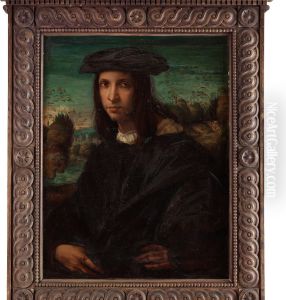
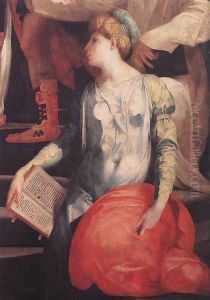
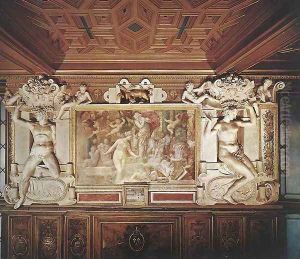
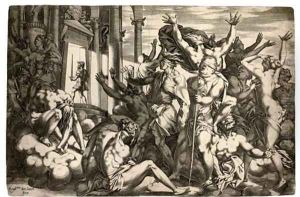
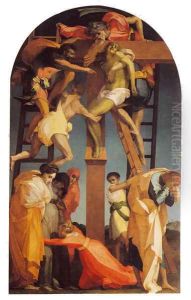
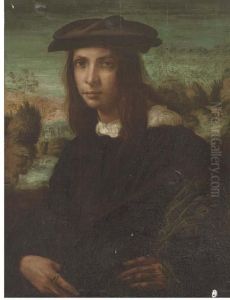
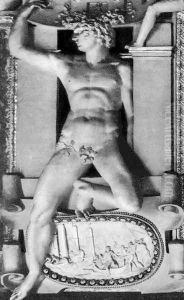
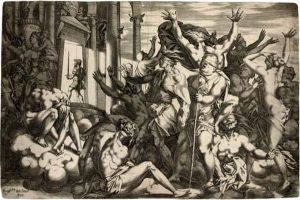
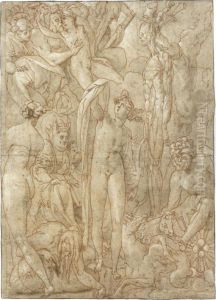
![[follower Of Rosso Fiorentino ; Studies Of Figures And A Faun ; Pen And Brown Ink And Wash ; Bears Numbering In Brown Ink, Lower Right: 52 ]](https://www.niceartgallery.com/imgs/538213/s/fiorentino-rosso-follower-of-rosso-fiorentino-studies-of-figures-and-a-faun-pen-and-brown-ink-and-wash-bears-numbering-in-brown-ink-lower-right-52--bdf5b790.jpg)
